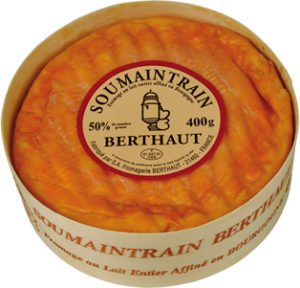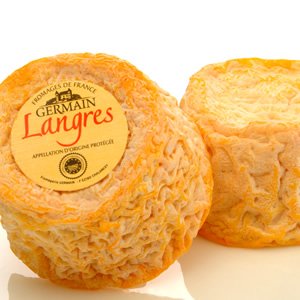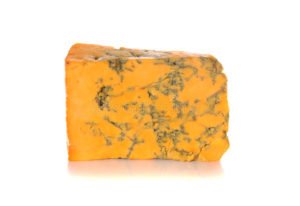National Moldy Cheese Day October 9 Celebrates “The “Good Mold”
 (Gerry Furth-Sides) Mark your calendars for October 9 and Moldy Cheese Day. While the idea of mold on most types of food is not a pleasing one, five fast facts about mold on more complex cheeses can help change your mind, including those with wonderfully wrinkly rinds such as the one below.
(Gerry Furth-Sides) Mark your calendars for October 9 and Moldy Cheese Day. While the idea of mold on most types of food is not a pleasing one, five fast facts about mold on more complex cheeses can help change your mind, including those with wonderfully wrinkly rinds such as the one below.
What could be better than a salad with stinky gorgonzola, julienned hard Italian salami and candy-peppered walnuts on a bed of mixed greens – with a bold red wine?
Chef Giada DeLaurentis even has a recipe for gorgonzola and salami biscuits that are a must to make: //www.foodnetwork.com/recipes/giada-de-laurentiis/salami-and-gorgonzola-biscuits-recipe. For imaginative, detailed ideas about cheese and wine pairing, please see //winefolly.com/tutorial/6-tips-on-pairing-wine-and-cheese/.
For more detailed information about which cheeses are best and healthy, consult an expert. Beautiful ways of arranging platters and pairing cheeses are also available at these shops, such as Fromagerie Sophie: www.fromageriesophie.com. However, all experts agree, “Throw away anything questionable.”

Mold spores protect the cheese from bacteria, the more the better. And molds on the outside of cheese produce an enzyme that makes the cheese just inside the rind super “ooey gooey”.
The rind is edible on many kinds of cheese, and it holds a lot of the flavor. Molds have been added to cheeses for thousands of years and are added at various stages of the cheese making process. Safe mold on some cheeses such as Danish Blue, Brie, and Camembert and in cheeses like Gorgonzola, Stilton, and Roquefort even add to their flavor profile. And moldy Parmesan rind adds to the flavor and texture of a variety of hot soups and stews.
BUT, when mold appears on semisoft and hard cheeses like cheddar, Colby, and Swiss, it is fine to eat the cheese, but not the mold. Use a clean knife and clean the knife after each cut to avoid recontamination. Tip: trim off at least half an inch around and beneath the moldy areas, then store the cheese in a new package to help keep it mold-free for a longer time.
Without mold, we might not be able to make aged cheeses at all so if you like any cheese, give the healthy moldy cheese a try.
First, a few tips about moldy cheese NOT to eat:
Moldy soft cheeses, such as cream cheese, cottage cheese, and ricotta cheese, as well as cheeses that have been shredded, sliced, or crumbled, should be tossed immediately. That’s because mold can send threads throughout soft and shredded cheeses, and also support the growth of harmful bacteria, such as Brucella, listeria, E. coli, and salmonella.
For everything you ever wanted to know about cheese storage, including temperature and shelf life, please see //www.formaticum.com. This is the company that makes the two-ply cheese paper.
Two-ply Cheesepaper offers just enough moisture to protect cheese properly. Otherwise, cheese can be wrapped in wax or parchment paper, then in a partially sealed plastic bag. Wrapping my cheese blocks in waxed paper and storing them in a plastic box with a lid partially open was alright after all!




 Gerry Furth-Sides
Gerry Furth-Sides  Barbara Hansen
Barbara Hansen  Chef-owner Alain Cohen
Chef-owner Alain Cohen  Roberta Deen
Roberta Deen  Jose Martinez
Jose Martinez  Nivedita Basu
Nivedita Basu